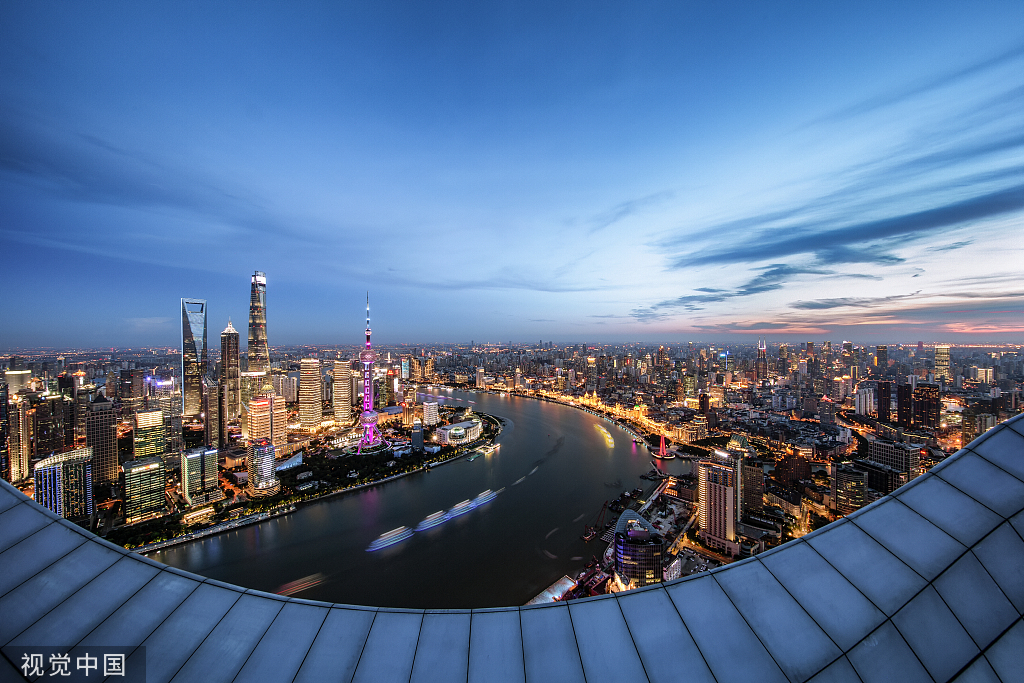Fresh policies to promote a more open Shanghai
- By He Shuquan
 0 Comment(s)
0 Comment(s) Print
Print E-mail China.org.cn, August 20, 2019
E-mail China.org.cn, August 20, 2019

The Shanghai municipal government issued a document on Aug. 13 to promote the development of the regional headquarters (RHQs) of multinational corporations.
It contains six sections, 30 measures in total, and is intended to further relax the restrictions on such investment so as to encourage regional headquarters of multinational corporations to cluster in the city.
In 2002, Shanghai was the first city in Chinese mainland to introduce policies specifically designed for this purpose. Since then, the city's headquarters economy has made great progress and, until now, it has attracted 696 regional headquarters of multinational companies and 450 R&D centers.
Shanghai has always led the country in this regard. According to the annual report of foreign-invested enterprises in 2018, the regional headquarters of multinational corporations accounted for 1.34% of foreign-invested enterprises in the city, contributing 10% of the operational income, 17% of total profits, 12% of total tax payments, and providing more than 6% of the total jobs.
As the global economy has developed, several challenges have emerged to the further development of the regional headquarters of multinational corporations in Shanghai, with the followings standing out.
First, the regional headquarters certification standards of multinational corporations do not match the current operational models of multinational corporations as an increasing number adopt a light-assets strategy.
Second, due to policy restrictions, the regional headquarters of multinational corporations are restricted in performing some of their normal functions, such as investment, capital operation and settlement, procurement and sales, research and development, human resources, logistics distribution, and operation management.
Third, the competition for attracting regional headquarters of multinational companies has become even more intensive as many economies, such as Singapore, have become attractive destinations with their superior financial and trade facilitation environment, tax policy and advanced international education and medical standards.
The document released on Tuesday is obviously aimed at dealing with these challenges. To cope with the first, the new policy optimizes the regional headquarters certification standards for multinational corporations from three aspects.
First, the total assets requirement of the regional headquarters parent company has been relaxed to the $200 million level, and the total assets requirement of the parent company of the headquarters-type organization has been lowered to $100 million.
Second, the requirement on the parent company's actual payments and the number of companies managed has been canceled. And third, the restriction that the regional headquarters must be a sole proprietorship has been abolished.
To take full advantage of the headquarters functions of a multinational company, including investment, financial operation, financial management, procurement and sales, research and development, human resources and logistics distribution, the new policy explores breakthroughs in terms of investment facilitation, freedom of use and convenience of capital, trade and logistics facilitation and research and development.
For example, Shanghai plans to add renowned foreign trademarks considered vulnerable to infringement to its key protection list, so as to provide better intellectual property protection services for the regional headquarters to further facilitate R&D.
The third challenge is dealt with by supporting the headquarter functions. Shanghai will develop policies and measures to encourage the development of international education and foreign-related medical care, facilitate the entry and exit of foreign domestic service personnel hired by senior executives at headquarters, increase services to headquarters enterprises, and create a regional headquarters environment beneficial to multinational corporations.
Although the Shanghai Free Trade Zone is not mentioned in the new policy, it is definitely part of the policies to build the Shanghai Free Trade Zone Lingang New Area, an area displaying the best features of a more open Shanghai. The Overall Plan for the Lingang New Area of the China (Shanghai) Pilot Free Trade Zone released on August 6 put forward a plan to build an Asia-Pacific supply chain management center, improve the systematic institutional supporting system for new international trade and international market investment and financing services, and attract the gathering of headquarters-oriented businesses.
The new trend in international trade is, in fact, offshore trade, and the company headquarters functions such as investment and financing management, procurement and sales, research and development, human resources and logistic distribution can be well performed in the New Area.
The new policy will strongly propel Shanghai to be more open by promoting headquarters economy development and building an open industrial system with strong international competitiveness.
He Shuquan is a professor from School of Economics, Shanghai University.
Opinion articles reflect the views of their authors only, not necessarily those of China.org.cn.
If you would like to contribute, please contact us at opinion@china.org.cn.






Go to Forum >>0 Comment(s)